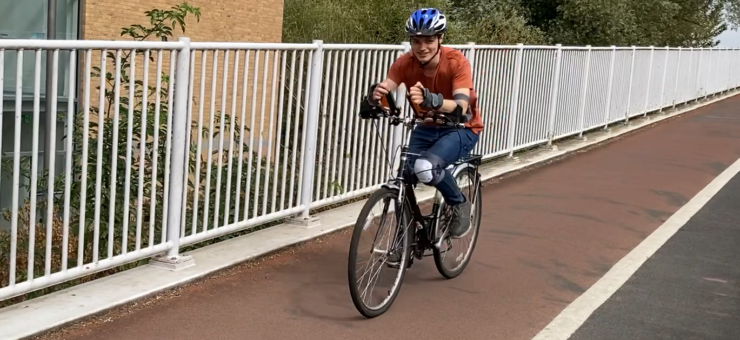How can a wooden plank help amputees ride a bike?
30 November 2022
At Springboard we are combining our technical ability and charitable efforts to work on a project with Humanos3D, a charity based in Medellin, Colombia. Some of the problems the charity are trying to solve are more complex and require iterative design and engineering expertise to meet the needs of the user; Springboard chose to take on one of the unsolved cases. We started out with a plank of wood….
Background
Humanos3D are a charity dedicated to making low-cost 3D printed prosthetic hands, arms, and assistive devices. They deliver devices across the country – including to some of the most remote areas – through mobile clinics, allowing the charity to reach those most in need.
Colombia has a great need of these devices following a 52-year civil war and more recent violence surrounding the narcotics trade. Humanos3D not only help to provide this service but make all device designs open source so that people can benefit worldwide.
Brief
Make riding a bike accessible to people with bi-lateral transradial amputations – both arms below the elbow. We are based in Cambridge, the capital of bike riding in the UK, one could argue, we felt that working with the charity to make riding a bike more accessible was the perfect project.
Being able to ride a bike is a common request but providing sufficient control over steering and braking present the biggest challenges in development. But why are steering and braking so challenging?
- For every joint lost, the number of operations we can perform is reduced – there are many things we can do easily with our fingers that are hard to replace with other motions e.g. squeezing the brakes on a bike
- We have to be careful in finding other motions to replace braking that don’t interfere with other operations like steering. Braking by pulling something is no good if it cannot be done for an emergency stop or causes the rider to swerve or cannot be done when cycling uphill
- The motions still need to be intuitive and balanced so that the user can do them without too much difficulty
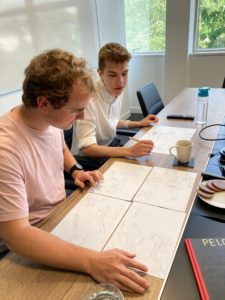
The Springboard team planning initial brainstorming
As well as safe and comfortable to use, the device must be:
- Low in cost
- Robust to wear and tear
- Easy to manufacture and assemble
- Modifiable to different bikes or users as needed
We held brainstorms with a range of different skill sets to find the most creative and robust ideas, then tried out the top design.
We settled on something not unlike a tribar used in racing – the user can rest their arms just below the elbow on a pad directly attached to the handlebars, and lean or twist their body to steer. Finding a way to brake effectively without having to squeeze something was more challenging to solve: there are very few movements that wouldn’t impact steering too much. But by slightly modifying the brakes and adding a paddle to make them easy to reach while leaning on the handlebar, a gentle push inward of the forearms brakes the bike as effectively as ever without needing to use hands.
The brake paddle started out life as a wooden plank with a hole drilled through it, but with a little development and some design reviews it soon flourished into an adaptable concept which held up well in use. Testing and improvement of the arm rest focused on comfort while maintaining stability for the user.
The team designed, tested, and iterated the concept to reach something robust but intuitive to use in testing around the local area. We have handed over the design to Humanos3D so the next step now is to get feedback from a user and to see it in action in Colombia!
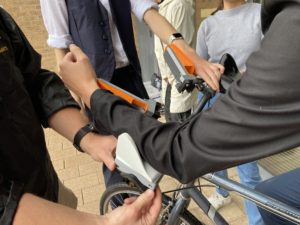
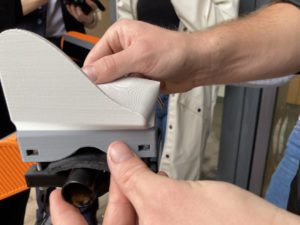
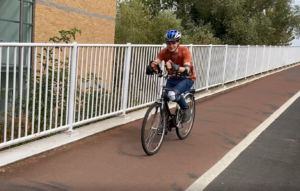
Testing the device
Do you have an idea that you’d like to discuss with us? Contact us to find out how we can help.


